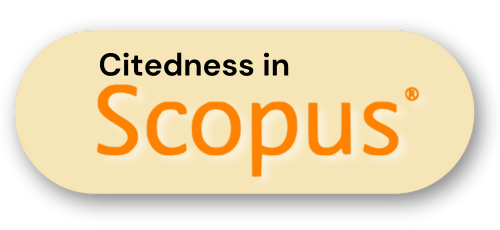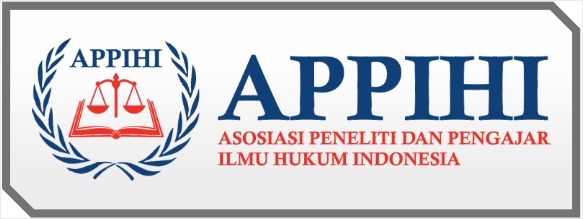Redefining Ownership and Originality in the Age of AI: A Legal and Ethical Review
DOI:
https://doi.org/10.61194/law.v2i4.726Keywords:
Artificial Intelligence, Intellectual Property Law, AI-Generated Content, Authorship and Originality, Sui Generis Regulation, Legal Harmonization, Digital EthicsAbstract
The proliferation of artificial intelligence (AI) in the creative sector presents novel legal and ethical challenges to existing intellectual property (IP) frameworks. This study aims to explore how the growing role of AI in producing original works affects current IP laws, particularly in determining ownership and originality. Using a narrative review method, the research synthesizes literature sourced from Scopus, Google Scholar, and PubMed, filtered through strategic keyword combinations and strict inclusion criteria. It examines interdisciplinary findings covering legal theory, policy, ethics, and empirical case studies from multiple jurisdictions. The results indicate that while human involvement in algorithm design remains central to IP claims, the autonomous creative contributions of AI necessitate reformulation of legal concepts such as authorship and originality. Moreover, the study reveals significant jurisdictional disparities in legal treatment of AI-generated works, with systemic issues such as lack of international harmonization and outdated legislation contributing to legal uncertainty. Ethical concerns around dataset use and the risks of unauthorized reproduction also emerge as central themes. The discussion proposes solutions including sui generis IP models, blockchain verification systems, and cross-border policy frameworks to address these issues. The study concludes by emphasizing the urgency of coordinated legal innovation and ethical governance to ensure fair and effective IP protection in the AI era.
References
Agarwal, P. and Aston, J. (2024). The protection of AI-generated work., 175-190. https://doi.org/10.4324/9781003260127-13 DOI: https://doi.org/10.4324/9781003260127-13
Aronov, A. and Idrysheva, S. (2025). Copyright protection on works generated by artificial intelligence. Science and Innovation, 21(1), 112-124. https://doi.org/10.15407/scine21.01.112 DOI: https://doi.org/10.15407/scine21.01.112
Fontana, A. (2024). Web scraping: jurisprudence and legal doctrines. The Journal of World Intellectual Property, 28(1), 197-212. https://doi.org/10.1111/jwip.12331 DOI: https://doi.org/10.1111/jwip.12331
Gaffar, H. and Albarashdi, S. (2024). Copyright protection for AI-generated works: exploring originality and ownership in a digital landscape. Asian Journal of International Law, 15(1), 23-46. https://doi.org/10.1017/s2044251323000735 DOI: https://doi.org/10.1017/S2044251323000735
Kazeeva, I. (2024). Sui generis intellectual property protection for works generated by AI systems., 65-78. https://doi.org/10.1007/978-981-99-8897-6_5 DOI: https://doi.org/10.1007/978-981-99-8897-6_5
Kumar, D. and Suthar, N. (2024). Ethical and legal challenges of AI in marketing: an exploration of solutions. Journal of Information Communication and Ethics in Society, 22(1), 124-144. https://doi.org/10.1108/jices-05-2023-0068 DOI: https://doi.org/10.1108/JICES-05-2023-0068
Lee, J., Hilty, R., & Liu, K. (2021). Roadmap to artificial intelligence and intellectual property: an introduction., 1-8. https://doi.org/10.1093/oso/9780198870944.003.0001 DOI: https://doi.org/10.1093/oso/9780198870944.003.0001
Lizarralde, M. and Contreras, H. (2022). The real role of AI in patent law debates. International Journal of Law and Information Technology, 30(1), 23-46. https://doi.org/10.1093/ijlit/eaac008 DOI: https://doi.org/10.1093/ijlit/eaac008
Magauiya, A., Omarova, A., Kasenova, A., Akhmetov, Z., & Akhmadi, M. (2023). The practices of advanced countries in the legal regulation of intellectual property objects created by artificial intelligence. Law State and Telecommunications Review, 15(1), 191-206. https://doi.org/10.26512/lstr.v15i1.43935 DOI: https://doi.org/10.26512/lstr.v15i1.43935
Massadeh, F., Alnusair, F., Massadeh, A., & Ismail, M. (2024). The legal protection of artificial intelligence-generated work: the argument for sui generis over copyright. Corporate Law & Governance Review, 6(1), 49-56. https://doi.org/10.22495/clgrv6i1p5 DOI: https://doi.org/10.22495/clgrv6i1p5
Mazzi, F. (2024). Authorship in artificial intelligence‐generated works: exploring originality in text prompts and artificial intelligence outputs through philosophical foundations of copyright and collage protection. The Journal of World Intellectual Property, 27(3), 410-427. https://doi.org/10.1111/jwip.12310 DOI: https://doi.org/10.1111/jwip.12310
Ogul, S. (2024). Intellectual property in the age of machine creativity., 333-358. https://doi.org/10.4018/979-8-3693-7235-7.ch013 DOI: https://doi.org/10.4018/979-8-3693-7235-7.ch013
Ramli, T., Ramli, A., Mayana, R., Ramadayanti, E., & Fauzi, R. (2023). Artificial intelligence as object of intellectual property in Indonesian law. The Journal of World Intellectual Property, 26(2), 142-154. https://doi.org/10.1111/jwip.12264 DOI: https://doi.org/10.1111/jwip.12264
Thongmeensuk, S. (2024). Rethinking copyright exceptions in the era of generative AI: balancing innovation and intellectual property protection. The Journal of World Intellectual Property, 27(2), 278-295. https://doi.org/10.1111/jwip.12301 DOI: https://doi.org/10.1111/jwip.12301
Townsend, B., Sihlahla, I., Naidoo, M., Naidoo, S., Donnelly, D., & Thaldar, D. (2023). Mapping the regulatory landscape of AI in healthcare in Africa. Frontiers in Pharmacology, 14. https://doi.org/10.3389/fphar.2023.1214422 DOI: https://doi.org/10.3389/fphar.2023.1214422
Xiao-ying, R. and Hong-fu, C. (2024). Analysis on the predicament of future law and its solution under the background of artificial intelligence. https://doi.org/10.3233/faia231505 DOI: https://doi.org/10.3233/FAIA231505
Ahlin, E., Gibbs, J., Kavanaugh, P., & Lee, J. (2016). Support for restorative justice in a sample of U.S. university students. International Journal of Offender Therapy and Comparative Criminology, 61(2), 229-245. https://doi.org/10.1177/0306624x15596386 DOI: https://doi.org/10.1177/0306624X15596386
Aji, W. (2019). The implementation of diversion and restorative justice in the juvenile criminal justice system in Indonesia. Journal of Indonesian Legal Studies, 4(1), 73-88. https://doi.org/10.15294/jils.v4i01.23339 DOI: https://doi.org/10.15294/jils.v4i01.23339
Teimouri, H. and Subedi, S. (2018). Responsibility to protect and the international military intervention in Libya in international law: what went wrong and what lessons could be learnt from it?. Journal of Conflict and Security Law, 23(1), 3-32. https://doi.org/10.1093/jcsl/kry004 DOI: https://doi.org/10.1093/jcsl/kry004
Towadi, M. (2017). The application of sharia maqashid on the protection of the rights of minority of muslim Rohingya in regional ASEAN (Indonesia-Malaysia). Journal of Indonesian Legal Studies, 2(1), 43-54. https://doi.org/10.15294/jils.v2i01.16637 DOI: https://doi.org/10.15294/jils.v2i01.16637
Ziegler, C. (2016). Critical perspectives on the responsibility to protect: BRICS and beyond. International Relations, 30(3), 262-277. https://doi.org/10.1177/0047117816659533. DOI: https://doi.org/10.1177/0047117816659533






